Our Experts

Our expert, award-winning staff selects the products we cover and rigorously researches and tests our top picks. If you buy through our links, we may get a commission.
Reviews ethics statement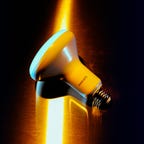
Excellent, flicker-free alternative
Philips BR30 Floodlight LED with warm glow dimming
View details
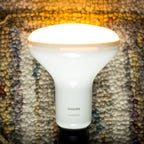
Best low-light choice for nondimmer switches
Philips SceneSwitch Floodlight LED
View details
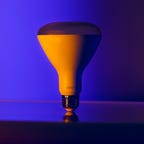
Best overall
Cree 65W Replacement Floodlight LED bulb (Update: Out of stock)
View details
It's always important to have good lighting, but some spaces require a little extra -- and that's why you should have an LED floodlight bulb. To name a few places that would benefit from one: your porch, driveway, yard, garage, basement, etc. The LED floodlight bulbs provide better security outside your home, allowing you to see more clearly outside in the dark. Furthermore, a bright light is sure to deter trespassers from entering your space, especially when paired with a good security camera. Plus, you typically get a 10-year warranty with your new bulb, so you won't have to replace them for a long time.
Read more: Best Smart Home Gifts for 2024
Unfortunately, there's a big issue. As with most lighting, there are many options on the market. Plenty of LED floodlight manufacturers are out there, and it can be difficult to tell which ones are good, apart from bog-standard bulbs that may lack brightness or the particular color temperature you need. If you have a smart home system and you want to add something a little extra for the holidays, you’ll want to make sure your new smart light is compatible with what you’ve already got installed
We've tested the top options on the market to find the best LED floodlight bulbs for your home. Whether you’re after a budget bulb, security lighting or energy-saving models to keep down the electricity bill, we've found top picks to meet your needs.
Read more: Best Smart Bulbs for Less Than $20: Wiz, Wyze, Cree, GE and More
Best LED floodlight bulbs
The BR30 floodlight LEDs from Philips match Cree's outstanding and durable 10-year warranty. They're also super bright, a bit more efficient and a bit better at heat dissipation than Cree. They don't flicker or buzz on dimmer switches and they get warmer and more candle-like in tone as you dim them down, which some will appreciate. On top of all that, they're less expensive than Cree at about $4.50 per bulb.
So why don't they get the top spot? It's honestly neck and neck, but to my eye, Cree offers a slight uptick in color quality, and if you want the full 10-year warranty, you'll have to register your bulbs -- otherwise, you only get five years of coverage. In addition, the Philips bulb's lumen output topped out at a too-low average of 92% of its actual brightness on the dimmer switches I tested it with. That undercuts the brightness and efficiency selling points to a small extent. But make no mistake, this bright light is still a terrific choice for almost everyone.
Photo Gallery 1/1
If you need to replace a bunch of floodlights and you want to keep the cost as low as possible, then put the GE Basic floodlight LED at the top of your list. Available in a six- or 12-pack at Lowe's for around $4 per bulb, it's one of the lighting aisle's best values. Don't let the Basic branding fool you -- these bulbs are energy efficient, fully dimmable, durable and they manage heat surprisingly well.
Their light output isn't quite as bright as Cree and they won't last as long, but those tradeoffs are fair at this price -- especially given that each energy-efficient GE Basic LED will pay for itself in energy savings in less than six months if you're upgrading your outdoor security lights or indoor LED floodlights from incandescent bulbs.
It's a relatively pricey illumination option at $8 each, but the Philips SceneSwitch Floodlight LED is actually three bulbs in one: A yellowy, soft white bulb, a bright white, daylight bulb and a dimmed-down nightlight. Want to change between the three? Just switch the bulb off and then back on again within a few seconds. Leave it off longer than that and it'll turn back on to the setting you left it at when you return.
That's a great pitch for anyone who doesn't have dimmer switches but still wants to be able to dim the lights for movie night or illumination for late-night trips to the bathroom. The bulb also aced pretty much every one of our tests and with a power draw of just 8 watts (or a lot less if you're running it on the nightlight setting), it'll still save you money over the long run despite the higher-than-average entry cost.
Some light bulbs are better than others at making colors look accurate and vivid -- but few of today's LEDs do as good a job with color quality as the GE Reveal line of light bulbs, which make color quality the main point of focus.
I've tested several GE Reveal bulbs over the years and they always deliver on their promise of better-looking colors. The latest BR30-shaped bright light wide beam floodlight versions, now available in a two-pack at stores such as Lowe's and Target, are no exception. Unlike previous-gen GE Reveal bulbs, which filtered out excess yellow light, these new versions achieve better-looking colors by boosting the product's ability to render reds, a longtime LED sticking point. It works -- and it also means that the bulbs are both super bright and more efficient than before, making them ideal outdoor floodlights if you're looking for a better outdoor security light.
After countless hours spent testing floodlights in CNET's lighting lab, the Cree 65W Replacement Floodlight LED emerged as our Editors' Choice for the best LED floodlight. It's brighter than advertised (and super bright compared with most of the competition), it's energy-efficient enough to pay for itself in energy savings within a year and it'll work with a dimmer switch without flickering or buzzing. Best of all, Cree's LED bulb comes with a category-leading 10-year warranty to back up the 22.8-year life span. These light bulbs are seriously great for either an indoor floodlight or an outdoor space.
A BR30 bulb is a specific type of floodlight and one of the most common. The "BR" bit stands for bulging reflector, which means the light source inside of the bulb sits over a metallic, reflective bowl that bounces all the downcast light back up and straight out the top. Like the name also suggests, the top of the bulb typically bulges outward, which helps put out a fairly wide pool of illumination -- perfect for a security light or indoor floodlights. It's the same trick your car's headlights use to light up the road in front of you as you drive at night.
The "30" part refers to the diameter of the bulb in eighths of an inch. At 30 eighths of an inch, a typical BR30 bulb will be just shy of 4 inches wide.
Typically used in overhead, recessed lighting setups, BR30 floodlights are designed to cast a wide pool of bright illumination in a single direction.
Chris Monroe/CNETLED prices have fallen steadily over the past five years or so, with most dimmable LED floodlight options settling in the $5 to $8 price range and some available for even less. That's great since swapping in an LED floodlight for a 65-watt incandescent floodlight will knock an average of about $7 per year off your power bill. That means it won't take long at all for any of these LEDs to pay for themselves in energy savings.
Given how many durable options you have for $7 or less, I don't think you should spend any more than that per bulb without good reason. Keep an eye out for multipacks: Manufacturers use them to help bring down the cost per bulb, so they can make for an especially good deal if you need a bunch of bulbs anyway.
New dimmable 65-watt replacement floodlight LEDs in 2024
| 792 | 732 | 659 | 799 | 749 |
| 9.5 | 8.5 | 8.5 | 9 | 9 |
| 83.4 | 86.1 | 77.5 | 88.8 | 83.2 |
| $1.14 | $1.02 | $1.02 | $1.08 | $1.08 |
| 2,972 K | 2,646 K | 2,659 K | 2,838 K | 2,716 K |
| 12 to 92.8% | 9.5 to 96.6% | 1.7 to 99.8% | 11 to 94% | 4.7 to 92.4% |
| No (persistent buzz) | Yes | Yes | No (faint buzz, flicker on older rotary dials) | Yes |
| 14.6% | 6.3% | 7.1% | 8.3% | 4.6% |
| 13.7 years | 22.8 years | 6.8 years | 13.7 years | 22.8 years |
| 3 years | 10 years | 2 years | 5 years | 10 years |
| $12 (2-pack) | $10 (2-pack) | $17 (6-pack) | $17 (2-pack) | $13.45 (3-pack) |
| $5.99 | $4.99 | $2.83 | $8.50 | $4.48 |
| 0.9 years | 0.74 years | 0.42 years | 1.26 years | 0.67 years |
| 6.1 | 8.8 | 8.4 | 7.3 | 8.7 |
I've tested several LED floodlights over the years, including brand-name options from the likes of Cree, GE, Sylvania and Philips, as well as store-brand bulbs from Walmart, Target and Amazon. I honed in on dimmable, soft white-toned, 65-watt replacement LEDs since those are the most popular option, but if you want something nondimmable or daylight-tinted for your outdoor light fixtures, you'll find bulbs like those in the lighting aisle too.
In other words, you've got more options than ever these days. Many of them are excellent and most don't cost much.
Read more: The Best LED Light Bulb for Every Room in Your House
No matter what you pick, you'll want to look for a durable bulb that puts out at least 650 lumens of brightness from a power draw of 10 watts or less. I'd also advise sticking with a product that offers an average lifespan of at least 10 years and a warranty of at least five years if possible.
Need to buy a bunch? Start with one, keep the receipt and make sure you like the quality of light and the way it dims in your home before going all in. Most major retailers are pretty accommodating with light bulb returns, so it's fine and sensible to try one or two out before committing to the next decade or more of in-home lighting.
Remember, you're going to live with these super bright LED lights every day for a long time. So it's worth getting a bulb type that you like and avoiding the ones that'll annoy you.
Watch this: Coolest alternative smart light fixtures
10:08
I think it's definitely worth considering.
The majority of smart bulbs are the common A-shaped bulb type, but you've got a growing number of floodlight options, too. Lifx and Philips Hue are probably the two most notable names here. Each offers smart floodlights that change colors and work with all of the major voice platforms (Siri, Alexa and Google Assistant), but both are expensive. Want something cheaper? Look for white-light floodlight options from names such as Sylvania and Sengled that cost $10 per bulb or less.
Enlarge Image
Five, affordable new smart switches will join the C by GE smart lighting lineup this year.
Ry Crist/CNETJust keep in mind that, except for Lifx bulbs, which communicate using Wi-Fi, all of these smart lights require a Zigbee hub that can translate the bulb's signals into something your router can understand. Hue bulbs require the Philips Hue Bridge, an Amazon Echo Plus or a second-gen Echo Show. Those three can all control Sengled and Sylvania bulbs too, as can other Zigbee controllers like the SmartThings Hub.
Smart bulbs are a great choice if you're picky about dimming. With bulb-specific dimming hardware built right in, most smart bulbs will dim with flawless, flicker- and buzz-free precision via their app or through some other integration like an Amazon Alexa voice command. You won't need to use dimmer switches associated with those light fixtures at all. You might need to teach your kids to leave the switch up so your automations will work as planned, but there are new solutions for that age-old problem coming out this year, too.
Beyond that, you could always smarten up any of the dumb bulbs recommended in this post by pairing them with a smart switch that's wired into your wall. If you've got a bank of floodlight bulbs overhead that are all wired to one switch, smartening up one switch instead of several bulbs might be the better way to go, anyway. The best I've tested is still the Lutron Caseta line of smart switches, but keep an eye out this year for new, relatively low-cost smart switches from GE.
Good question!
First, a little about me: I'm not a lighting engineer, but I've tested and reviewed light bulbs for CNET for over five years now. That includes hundreds of hours in our homemade lighting lab -- a climate-controlled room equipped with a spectrometer and an integrating sphere that lets us run the most scientific and accurate light bulb tests we can possibly run. I've also visited and written features about major North American lighting manufacturers such as Cree and GE to get a better understanding of their methods and standards. This is one of numerous LED buying guides and roundups that I try to update as often as possible.
A peek inside our integrating sphere.
Ry Crist/CNETWe load each bulb we test into the center of our integrating sphere -- a big, hollow ball with special, reflective paint coating the inside. Our spectrometer peeks in through a tiny hole in the side of the sphere, with a "baffle" that blocks it from looking directly at the light bulb. Instead, the bulb's light bounces around inside, which lets our spectrometer take reliable, calibrated measurements for things like brightness and color temperature.
We log those brightness measurements every 10 minutes for 90 minutes, then take a final reading at the end. At that point, I plug the sphere's power cord into a variety of dimmer switches, then measure for the average maximum and minimum settings across all of them while also keeping a close lookout for flicker or buzz.
Once a bulb we're testing is done in the lab, we take a close look at things like light spread, tone and color quality. Our photo and video team (Tyler Lizenby, Chris Monroe and Vanessa Salas here in Louisville) are a huge help at this point, with standardized photography that lets us take a really close look at those metrics. They're also just really damned good at taking pictures of light bulbs.
All of that said, the most important thing isn't what I think when I'm taking readings in our lighting lab -- it's what you and your family think after screwing the bulbs in and turning them on in your living room or other area. As I said, LEDs like these are designed to be durable and waterproof and last years, so it's well worth buying ones that you'll actually like living with. You've got a lot of good options these days, so there's really no need to compromise. I'm just here to help you find those "just right" bulbs a bit faster -- or more efficiently, you might say.
This new floodlight LED from Sylvania isn't available outside of California yet, but it's efficient, putting out 93.7 lumens per watt. It'll be one of the next bulbs I review.
Chris Monroe/CNET

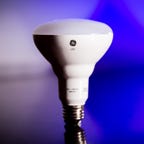
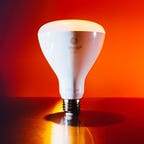

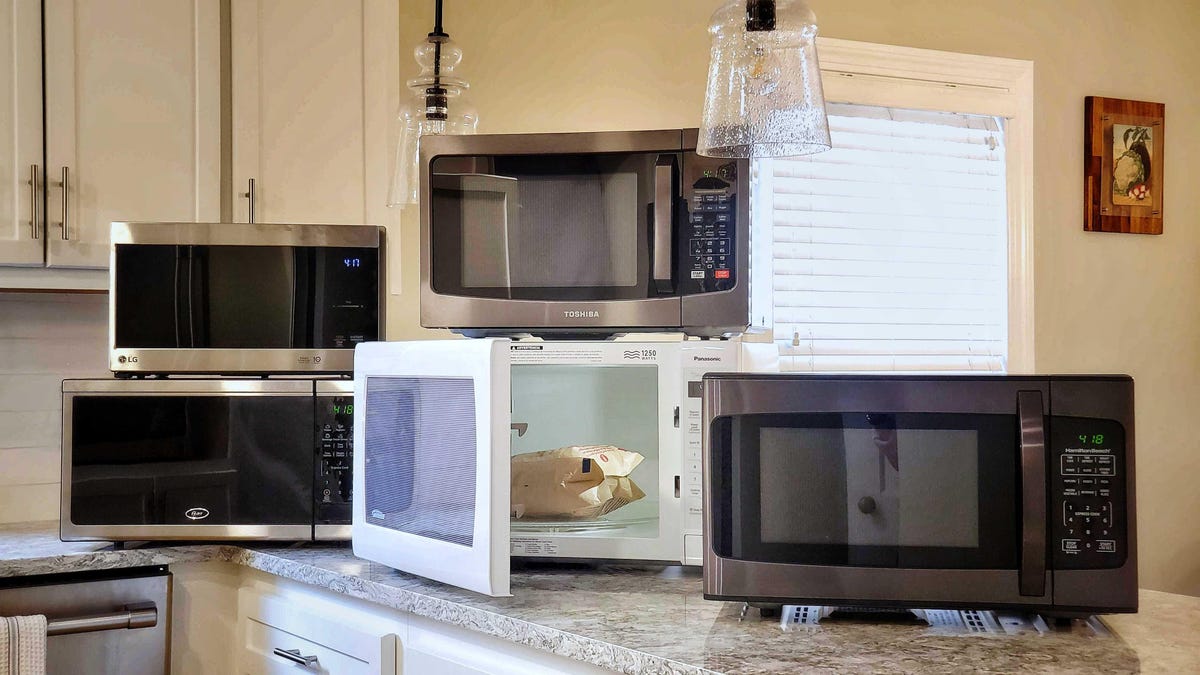


:quality(85):upscale()/2024/10/31/831/n/49351773/b7bf33836723d2f0643c55.51137847_.jpg)



 English (US) ·
English (US) ·